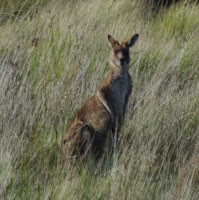
Learn about Birds Australia’s Beach-nesting Birds project and how to safely monitor nesting
birds. All welcome!
Location: Venus Bay Surf Life Saving Club (Surf Drive)
Date: Saturday 6th November
Indoor presentation: 11:00 am -12:00 pm
Break for lunch 12:00 - 1:00pm
[Bring along your lunch; tea/coffee/juice and cake will be provided]
Beach walk*: 1:00pm departing Number one beach (end of Surf Drive), heading east along the beach. We will walk at least 1km and depending on your fitness, there is the option join us on a longer walk.
* For those going on the beach walk, please be prepared for the weather and bring along wet weather gear or sun protection as required. If you have binoculars, please bring these along. You might want to bring along a bottle of water to keep hydrated.

 Now is the time of migration for many of the birds that nest along out coast. The shearwater [Puffinus tenuirostris] (more common knownly as the mutton birds) flies in from as far north as the Siberia, the Aleutian Islands and even the Californian coast. Unfortunately this year something happened and the beaches at Venus Bay are littered by hundreds of dead bird. Stormy weather probably isn’t to blame as most bird appear to have only recently died, a period of mild weather and calm seas and light sea fog. Presumably they died of exhaustion from their trip unable to summon the strength to continue to their nesting sites.
Now is the time of migration for many of the birds that nest along out coast. The shearwater [Puffinus tenuirostris] (more common knownly as the mutton birds) flies in from as far north as the Siberia, the Aleutian Islands and even the Californian coast. Unfortunately this year something happened and the beaches at Venus Bay are littered by hundreds of dead bird. Stormy weather probably isn’t to blame as most bird appear to have only recently died, a period of mild weather and calm seas and light sea fog. Presumably they died of exhaustion from their trip unable to summon the strength to continue to their nesting sites. In 1798, Mathew Flinders recorded watching an almost continuous line for several hours of shearwater leaving the waters of northern Tasmanian and heading across bass straight on the start of their migration north. He estimated that there were at least one hundred million birds within a single flock!
In 1798, Mathew Flinders recorded watching an almost continuous line for several hours of shearwater leaving the waters of northern Tasmanian and heading across bass straight on the start of their migration north. He estimated that there were at least one hundred million birds within a single flock!





